Are you planning your first trip to Japan and searching for essential travel tips to make your adventure smooth and unforgettable? With its rich culture, dazzling cities, and breathtaking landscapes, Japan offers a memorable experience for first-time travelers. However, navigating its unique customs, language, and transportation systems can feel overwhelming.
At Delectable Destinations, we’ve been curating extraordinary travel experiences for over 16 years, and our Timeless Japan trip is a testament to the beauty and allure of this captivating country. Whether wandering through the vibrant streets of Tokyo, discovering the serene beauty of Kyoto’s temples, or savoring exquisite local cuisine, our trips offer the perfect balance of cultural immersion and culinary delights.
In this comprehensive guide, we’ve compiled the most valuable Japan travel tips to help you fully enjoy every moment of your journey. By following our expert advice, you’ll be well-prepared to explore Japan with confidence—whether it’s understanding Japanese etiquette or mastering efficient travel. Ready to explore the Land of the Rising Sun? Let’s dive into the insights that will make your trip truly exceptional.
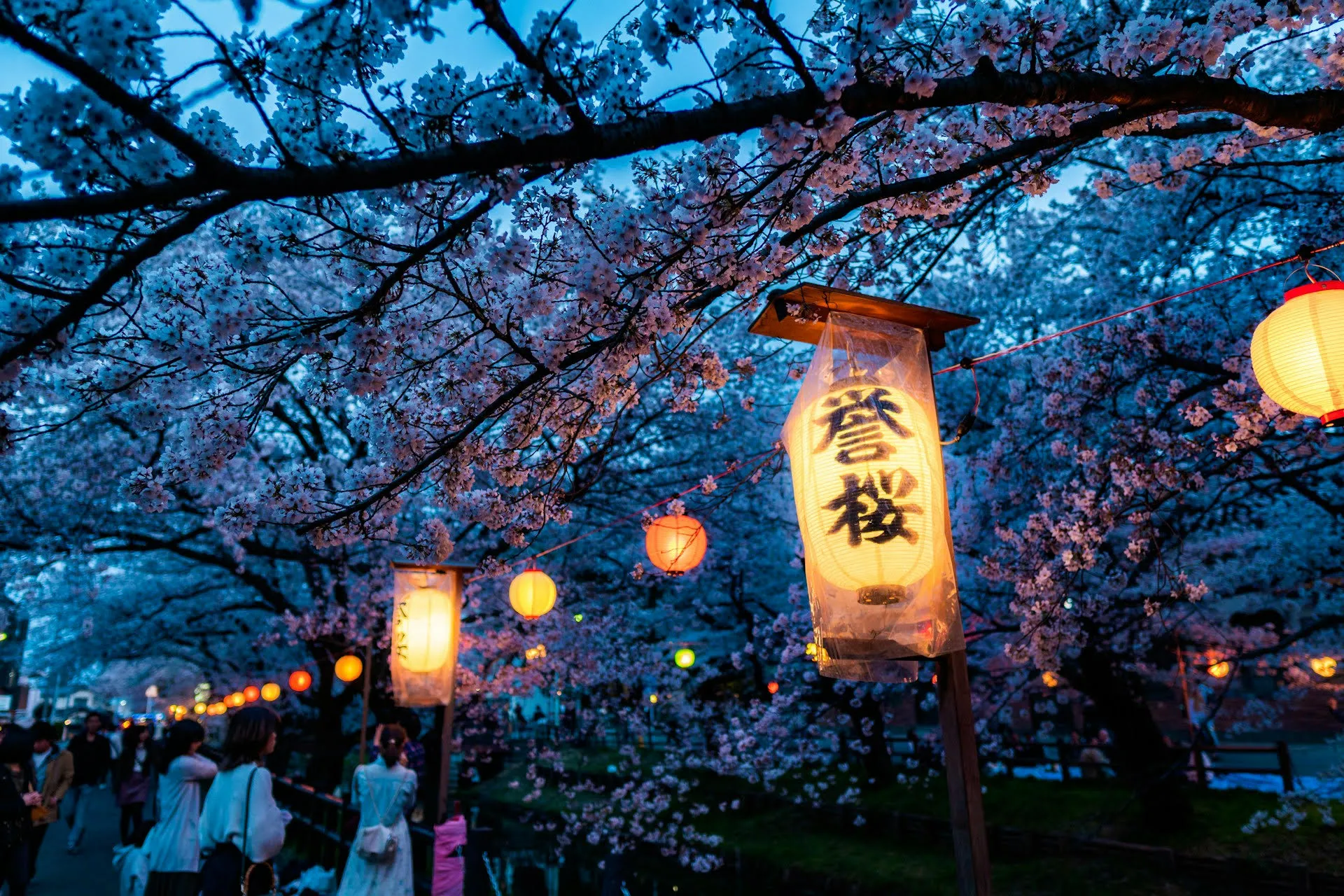
Essential Japan Tips for First-Timers
Planning Your Trip: Best Time to Visit Japan
Choosing the right time to visit Japan is crucial to maximizing your experience. Whether you’re drawn to the cherry blossoms or the vibrant autumn leaves, understanding Japan’s seasonal highlights and how to avoid peak travel times can make your journey even more memorable. Here’s what you need to know about the best times to plan your trip.
When to go: Seasonal highlights and festivals
Japan is a country that shines in all seasons, each bringing its unique charm. Autumn (September to November) is considered one of the prime times to visit, offering cooler temperatures and stunning displays of autumn foliage. The vibrant reds, oranges, and yellows transform Japan’s gardens, temples, and mountains into a picturesque wonderland. This season is ideal for hiking and exploring the natural beauty of places like Nikko, Kamikochi, and the Fuji Five Lakes.
Winter (December to February) might be the most underrated season, especially for those who love snow. Northern regions like Hokkaido offer world-class skiing and the enchanting Snow Festival in Sapporo, while cities like Tokyo and Kyoto present a quieter, more peaceful experience.
If you’re seeking iconic experiences, spring (March to May) is arguably the most celebrated time to visit. The famous cherry blossoms, or sakura, burst into bloom, creating breathtaking landscapes across the country. Cities like Kyoto, Tokyo, and Hiroshima are adorned with these pink and white petals, often accompanied by local festivals, such as hanami (flower-viewing) parties, where you can immerse yourself in Japanese culture.
For those interested in Japanese festivals, summer (June to August) offers an array of lively events, from the famous Gion Matsuri in Kyoto to the Nebuta Matsuri in Aomori. Just be prepared for the hot and humid weather, particularly in the cities. For a more detailed guide on Japan’s seasonal highlights and festivals, visit the Japan National Tourism Organization (JNTO) to find the perfect time for your visit.
Avoiding peak travel times and crowds
One of the most valuable Japan travel tips is to be mindful of the country’s peak travel periods, which can significantly impact your experience. The Golden Week (late April to early May), Obon (mid-August), and the New Year holiday period (late December to early January) are when domestic travel within Japan is at its highest. During these times, transportation and accommodations are often fully booked, and popular attractions can become overwhelmingly crowded.
If possible, plan your trip outside of these peak periods to enjoy a more relaxed and intimate experience. Visiting during the shoulder seasons—late spring, early summer, and late autumn—can offer a perfect balance of pleasant weather and fewer tourists. Additionally, exploring lesser-known destinations during peak times can provide a more authentic and serene experience and a chance to discover hidden gems that satisfy your curiosity and adventurous spirit.
By carefully considering when to visit Japan, you can tailor your trip to your preferences, ensuring that your journey through this captivating country is both fulfilling and unforgettable.
Packing Essentials: What to Bring for Your Japan Adventure
As you prepare for your journey to Japan, packing thoughtfully can make all the difference between a smooth, enjoyable trip and a stressful one. From the ever-changing weather to the tech-savvy culture, these tips will help ensure you’re well-equipped for whatever your adventure may bring.
Weather-appropriate clothing and accessories
Japan’s climate varies widely depending on the season and region, so packing the proper clothing is crucial. Autumn in Japan is all about layers. As the temperatures drop and the foliage turns brilliant shades of red and gold, pack a mix of lightweight sweaters, long-sleeve shirts, and a good-quality jacket to keep warm, especially in the evenings. Winter travelers, particularly those heading to regions like Hokkaido or the Japanese Alps, should pack warm, insulated clothing, including thermal layers, gloves, scarves, and a sturdy winter coat to stay comfortable in the cold.
In spring, when the cherry blossoms are in full bloom, temperatures are mild, but evenings can be cool. A light jacket or sweater and comfortable walking shoes for exploring the parks and gardens are essential. If you’re visiting during summer, be prepared for hot and humid weather. Lightweight, breathable clothing, a hat, sunglasses, and sunscreen are must-haves to stay cool and protected from the sun. Consider packing a compact umbrella, as summer showers are common. For a comprehensive packing checklist, explore this Ultimate Japan Packing Guide.
One thing you’ll always want to have with you, regardless of the season, is a pair of easy-to-remove shoes. In Japan, it is customary to remove your shoes before entering homes, traditional accommodations like ryokans, and even some restaurants and temples. Packing shoes that are easy to slip on and off will make your experience much more convenient.
Travel documents, SIM cards, and must-have tech gear
When it comes to travel documents, ensure your passport is up-to-date and that you have any necessary visas or entry requirements sorted out before departing. It’s also wise to carry a copy of your passport and other essential documents, such as travel insurance, in case of emergencies. An International Driving Permit (IDP) is required for those planning to drive in Japan, so be sure to obtain one in your home country before you go.
Staying connected in Japan is essential, especially for navigating the efficient but complex transportation systems. Consider purchasing a SIM card or renting a pocket Wi-Fi device to ensure you have reliable internet access throughout your trip. These can be ordered online and picked up at the airport upon arrival, or they can be delivered to your hotel. Access to mobile data will make it easier to use maps, translate text, and stay in touch with friends and family.
Regarding tech gear, a universal travel adapter is a must for charging your devices. Japan uses a standard 100V outlet with Type A and B plugs, so ensure your adapters are compatible. If you plan to take lots of photos (and definitely should!), don’t forget extra memory cards and a portable charger to keep your camera and phone powered throughout the day.
Finally, consider downloading essential travel apps before your trip. Apps like Google Maps, Hyperdia (for train schedules), and Google Translate can be incredibly helpful in navigating Japan’s public transport, communicating with locals, and finding your way around. With these Japan travel tips in mind, you’ll be well-prepared to fully immerse yourself in the wonders of this beautiful country.
Navigating Transportation in Japan
Getting Around: Understanding Japan’s Public Transit
Navigating Japan’s public transit system might seem daunting at first, but it’s one of the most efficient and well-organized in the world. With some preparation and a few insider tips, you’ll be traveling like a local in no time.

The JR Pass: Is it worth it?
One of the most popular travel options for visitors is the Japan Rail (JR) Pass, which offers unlimited travel on JR trains, including the famous Shinkansen bullet trains, for a fixed period. The JR Pass can be an excellent value, particularly if you plan to travel extensively across Japan. For instance, if your itinerary includes trips between Tokyo, Kyoto, Osaka, and Hiroshima, the cost of individual tickets can quickly add up—making the JR Pass a cost-effective choice.
However, if you plan to stay within a single region or city, you might find local passes or individual tickets more economical. The JR Pass is only available to foreign tourists. It must be purchased before arriving in Japan, so it is essential to evaluate your travel plans and calculate whether the pass will save you money. To learn more about buying a JR Pass and understanding which regions are covered, check out the official Japan Rail Pass website for pricing, terms, and other important information.
Remember that the JR Pass only covers some train lines in Japan. While it grants access to most JR-operated routes, it doesn’t include most subways, private railways, or buses. Still, the JR Pass remains a convenient option for most first-time travelers, offering flexibility and ease of use, especially for long-distance travel.
Mastering the subway and local trains
Japan’s cities are home to some of the world’s most extensive and efficient subway and local train networks. In Tokyo, for example, the subway system is the fastest way to get around, with clear signage in both Japanese and English. Navigating it can be a breeze once you understand a few basics.
First, it is helpful to get a prepaid IC card, such as a Suica or Pasmo card, which can be used on almost all trains, subways, and buses across Japan. These cards can be easily topped up at station machines, saving you the hassle of buying individual tickets for each journey. They can also be used for small purchases in convenience stores, vending machines, and even some restaurants.
Remember that Japan’s public transport operates with incredible punctuality when using the subway or local trains. Trains arrive on time down to the second, so ensure you’re on the platform well before your scheduled departure. Another handy Japan travel tip is downloading the Hyperdia or Google Maps app for real-time route planning and train schedules. These apps will help you navigate even the most complex networks and find the best connections between your destinations. Additionally, visit Japan Guide’s public transportation section for detailed instructions on using Japan’s subway systems, buses, and trains.
During peak hours, trains can be extremely crowded, particularly in major cities like Tokyo and Osaka. To experience a more relaxed journey, avoid traveling during rush hour (typically 7:30-9:00 AM and 5:00-7:00 PM). If you find yourself on a packed train, it’s essential to respect the local etiquette—stay quiet, avoid using your phone for calls, and make yourself as small as possible to allow others to board.
With these Japan travel tips in mind, you’ll find that the country’s public transit is easy to navigate and a fascinating part of your travel experience. Whether you’re zipping across the country on a Shinkansen or exploring the bustling neighborhoods of Tokyo, getting around Japan will become second nature in no time.
Tips for Efficient and Stress-Free Transit in Japan
Navigating Japan’s transportation network doesn’t have to be intimidating. With our expert advice, you’ll be gliding through the country’s impressive transit system with ease—whether it’s hopping on the subway or grabbing a quick taxi ride. Here are a couple of essential tips for making your journey smooth and stress-free.
How to use IC cards like Suica and Pasmo
One of the best Japan travel tips for making your transit hassle-free is to invest in an IC card, like a Suica or Pasmo. These rechargeable smart cards make getting around Japan incredibly convenient. With a quick tap, you can board almost any subway, bus, or local train without purchasing a ticket each time. You can even use these cards at vending machines, shops, and restaurants!
Upon arriving in Japan, you can easily purchase a Suica or Pasmo card at major train stations or airports. Topping them up is simple—find one of the automated machines in any station, available in both Japanese and English. If you plan to travel between multiple cities, your card can be used across the country, not just in Tokyo or its surrounding areas.
For first-time visitors, this saves time and effort, especially when you’re navigating unfamiliar transportation routes. You’ll avoid the stress of fumbling for change or struggling to figure out ticket prices, ensuring a smoother experience as you explore Japan.
Navigating buses and taxis like a local
While Japan’s public transit is famously reliable and efficient, there may be times when hopping in a taxi or taking a bus is your best option—especially in smaller cities or rural areas where train coverage may be limited. When it comes to taxis, it’s helpful to know that not all drivers will speak fluent English, so having your destination written in Japanese can be a lifesaver. Some taxi apps, like JapanTaxi, allow you to book rides easily, and newer taxis often accept credit cards or IC cards like Suica or Pasmo for payment.
Buses, though less frequently used by tourists, are also an excellent option for getting around, particularly in cities like Kyoto, where buses cover areas that trains don’t reach. Bus fares are affordable, and most buses are equipped with clear signage in English, making it easier for foreign travelers to navigate. You can also use your IC card to board buses, just like with trains and subways, adding to the convenience.
As you explore Japan, these tips for using taxis and buses will ensure that you have a variety of stress-free transportation options at your fingertips, no matter where your journey takes you.
Japanese Etiquette and Cultural Insights
Essential Japanese Etiquette for Travelers
Japan is a country where tradition and respect permeate everyday life, and understanding the cultural norms will elevate your experience as a visitor. Here are some essential Japan travel tips to ensure you make a positive impression and navigate social situations with confidence.
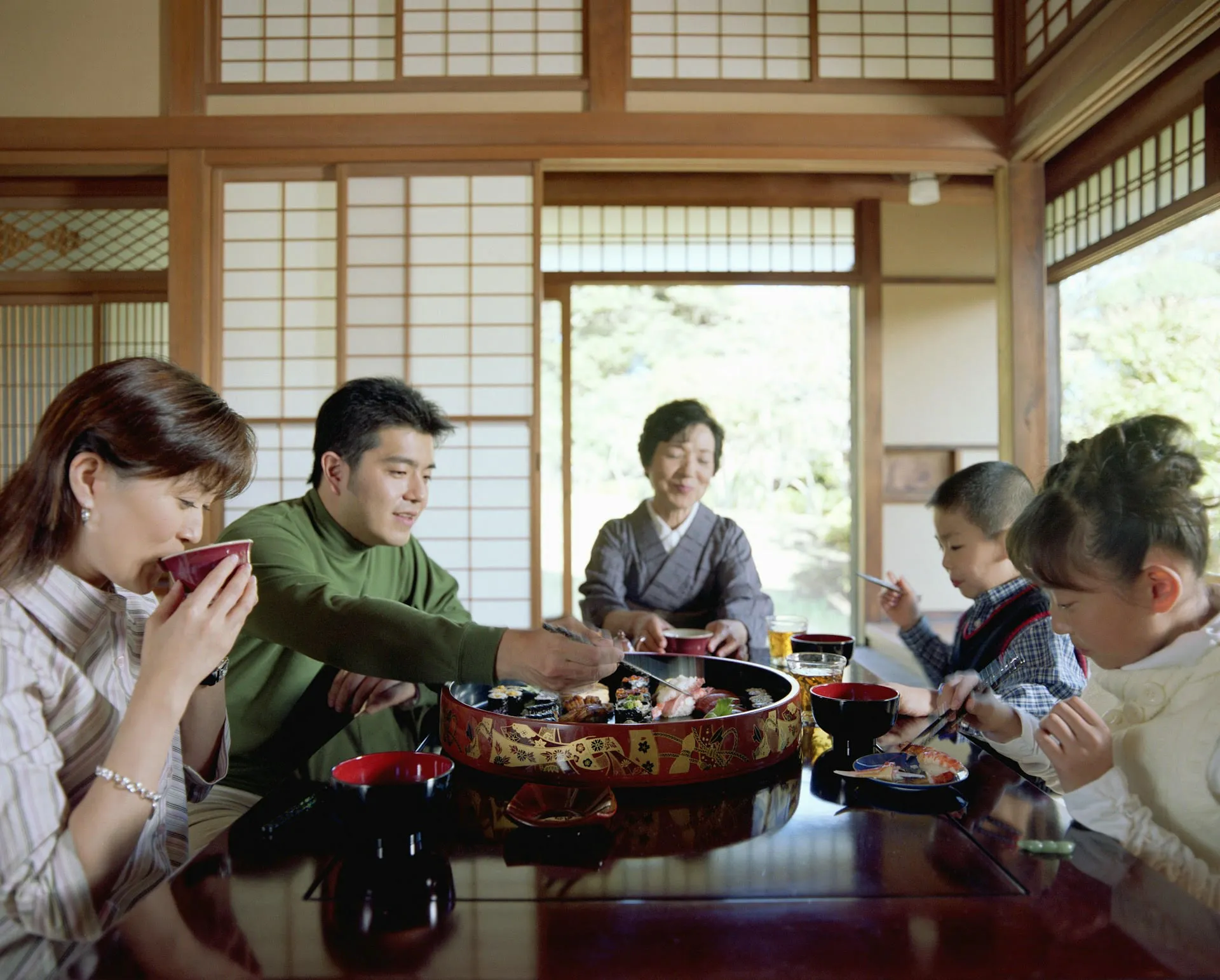
Do's and don'ts in social settings
Small gestures of respect go a long way in Japan. One of the most noticeable aspects of Japanese etiquette is bowing. Bowing is a sign of respect; it’s used in greetings, thanks, and apologies. A slight bow is sufficient for casual encounters, but a more profound bow shows more respect in formal situations.
Another important tip is to avoid being overly loud in public. It’s considered polite to keep noise levels down on public transportation, in restaurants, or while exploring the sights. If you need to take a phone call, it’s best to step away or keep your conversation brief and quiet.
It’s also worth noting that Japan is a no-tipping culture. Whether you’re at a restaurant, in a taxi, or at a hotel, tipping is not expected and can even be seen as rude. Instead, excellent service is considered part of the job, and a simple “thank you” (or “arigatou gozaimasu“) will suffice.
Dining etiquette: What to know before your first meal
Eating in Japan is a deeply respected and ritualized experience, and following a few dining customs will enhance your meals and show respect for your hosts. Before beginning a meal, it’s customary to say “itadakimasu,“ which expresses gratitude for the food you’re about to enjoy. Similarly, after finishing, a polite “gochisousama deshita” thanks those who prepared and served the meal.
Chopstick etiquette is also important. Avoid sticking your chopsticks vertically into a bowl of rice, as this resembles a funeral practice and is seen as disrespectful. Instead, place them on the chopstick rest when not in use. Also, never pass food directly from one person’s chopsticks to another, as this mimics a ceremonial act from funerals.
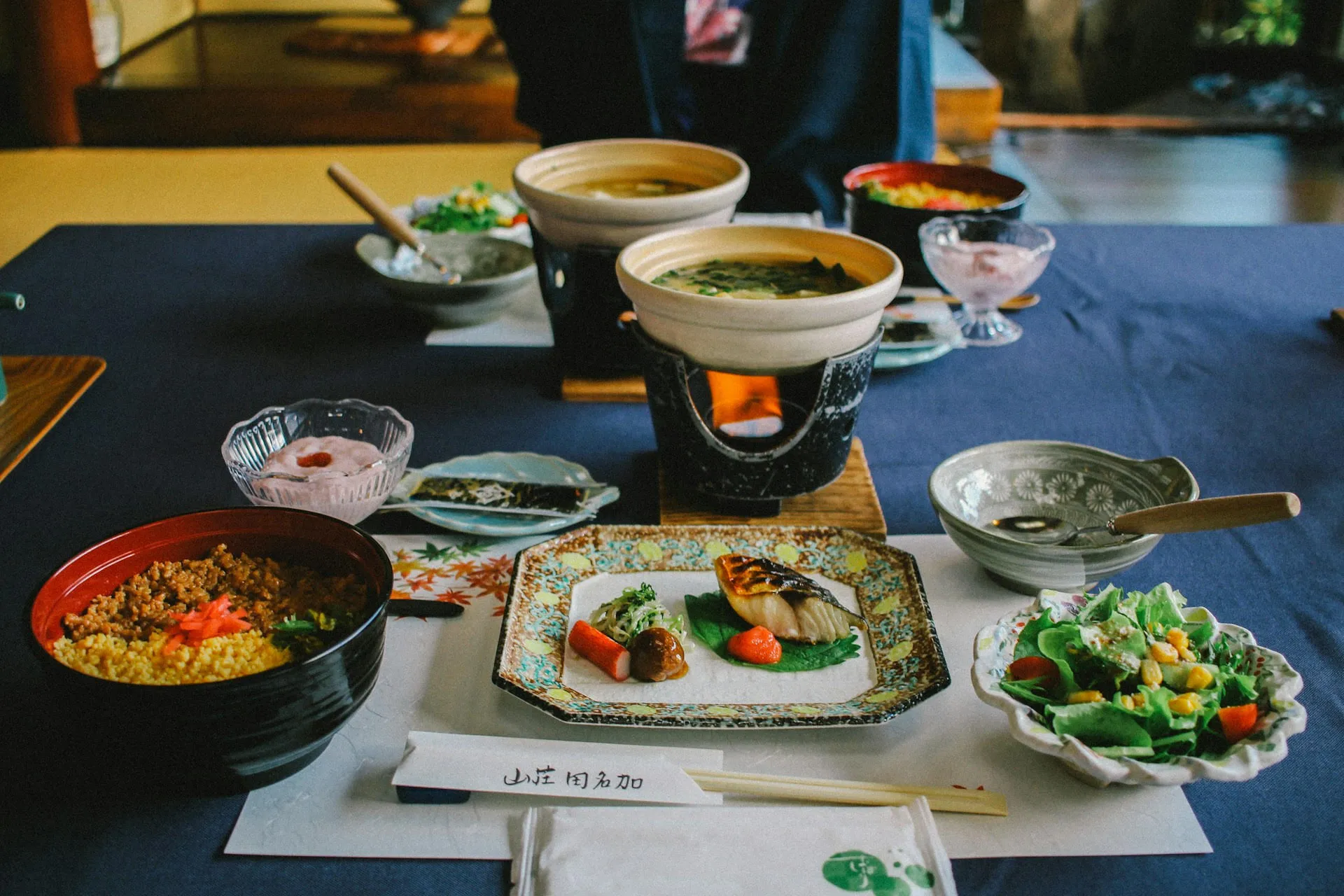
Another crucial Japan travel tip is to always strive to finish your food, especially in traditional settings. Leaving food behind can be interpreted as wasteful or disrespectful. If you anticipate that you might not be able to finish your food, it’s better to take smaller portions initially. This practice not only shows respect for the food but also for the efforts of those who prepared it.
These small yet significant cultural nuances can make all the difference as you immerse yourself in Japan’s rich traditions. If you’re eager to delve deeper into Japanese etiquette and customs, Tofugu’s comprehensive guide is an invaluable resource to avoid common cultural faux pas. By understanding and respecting Japanese etiquette, you’ll navigate your trip gracefully and enjoy this incredible culture’s warmth.
Japan Travel Tips: Understanding Local Customs
When visiting Japan, embracing the country’s customs is key to having a smooth and respectful experience. From temples to greetings, here are some essential tips to help you easily navigate local traditions.
Respectful behavior at temples and shrines
Japan is home to countless beautiful temples and shrines, each with cultural and religious significance. Before entering these sacred sites, please take a moment to observe how locals are behaving and follow their lead. At Shinto shrines, visitors typically see a cleansing station at the entrance, where they purify themselves before entering. This involves washing your hands and mouth with water using a wooden ladle—a simple act of respect for the space you’re about to enter.
Once inside, avoid being disruptive. Photography may be restricted in certain areas, so look for signs or ask if you’re unsure. Temples and shrines are often quiet places meant for reflection, so be mindful of your surroundings. If you’re making an offering, follow the local customs: bow twice, clap twice, make your wish, and bow one final time.
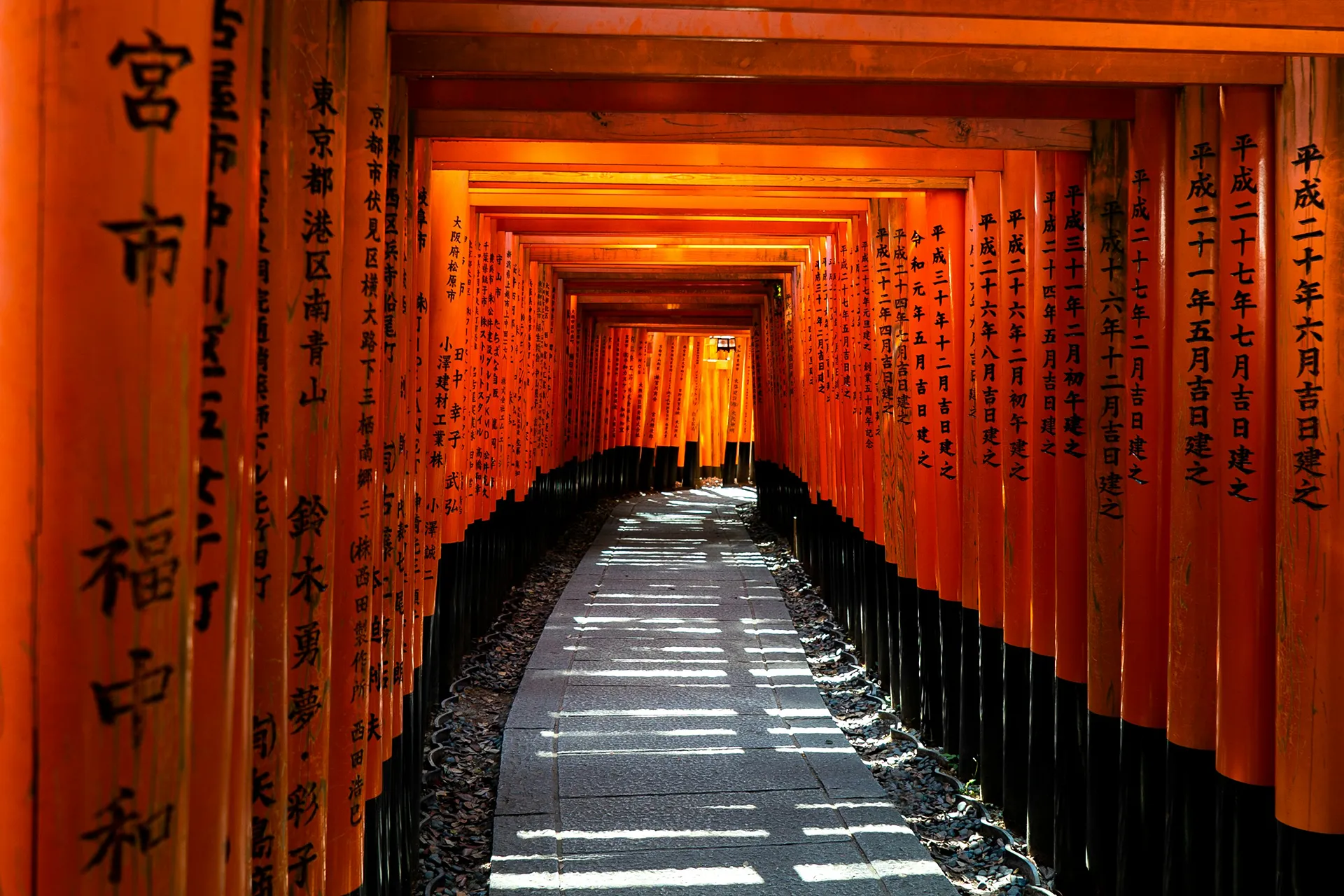
Navigating greetings and personal space
In Japan, greetings are an essential part of daily life. A bow is the traditional greeting and can range from a slight nod to a more profound, more formal bow, depending on the situation. When meeting someone for the first time, a bow combined with a polite greeting—such as “Hajimemashite” (nice to meet you)—is appreciated. Avoid extending a handshake unless the other person offers one first; this is not a common custom in Japan.
Personal space is also highly respected in Japan. Locals avoid physical contact with strangers on public transportation or in crowded areas. As a traveler, it’s important to maintain this respectful distance and refrain from touching others unless necessary. While Japanese people are generally very welcoming, maintaining an awareness of personal boundaries is seen as a sign of respect.
By following these local customs, you’ll not only show your respect for Japan’s deeply ingrained cultural traditions, but you’ll also gain a deeper appreciation for the country and its people. Each small act of courtesy enhances your experience, making your journey through Japan even more memorable.
Must-See Sights and Experiences in Japan
Iconic Landmarks You Can't Miss
For first-time travelers, Japan offers a stunning array of landmarks that blend the ancient with the modern. From the bustling energy of Tokyo to the serene temples of Kyoto, here are some must-see sights you can’t miss during your journey.

Tokyo's top attractions: From Shibuya to Asakusa
Tokyo, Japan’s vibrant capital, is a whirlwind of activity, modernity, and tradition all in one. Start your adventure at Shibuya Crossing, often referred to as the busiest intersection in the world. Watching thousands of people cross from every direction is an unforgettable, dynamic experience that perfectly captures the energy of this city. Just a short walk away, explore the buzzing shopping districts of Shibuya and Harajuku, where cutting-edge fashion meets quirky street styles.
For a taste of traditional Tokyo, head over to Asakusa and visit Senso-ji Temple, Tokyo’s oldest and most famous Buddhist temple. The iconic red gates and five-story pagoda, standing in stark contrast to the surrounding cityscape, offer a unique and memorable experience. Don’t forget to stroll down Nakamise Shopping Street for traditional souvenirs and local snacks, like fresh senbei (rice crackers) or taiyaki (fish-shaped cakes filled with red bean paste).
Kyoto's temples, gardens, and geisha districts
In contrast to Tokyo’s fast pace, Kyoto embodies the tranquility and grace of Japan’s ancient past. If temples and shrines are on your bucket list, Kyoto won’t disappoint. Begin with the Fushimi Inari Shrine, famous for its thousands of vibrant orange torii gates winding through the hills. It’s one of Japan’s most iconic landmarks and a photographer’s dream.
Next, go to the Kinkaku-ji (Golden Pavilion), a Zen temple covered in shimmering gold leaf, set against a tranquil pond and meticulously manicured gardens. For a quieter, off-the-beaten-path experience, explore Ryoan-ji Temple, home to a famous rock garden that invites peaceful reflection.
Of course, a trip to Kyoto would only be complete with a visit to the historic Gion District, the city’s most famous geisha neighborhood. Wander the atmospheric streets lined with traditional wooden machiya houses and, if lucky, catch a glimpse of a maiko (apprentice geisha) as she makes her way to an evening engagement. The district is also home to beautiful teahouses and specialty shops, perfect for soaking in the traditional charm of Kyoto.
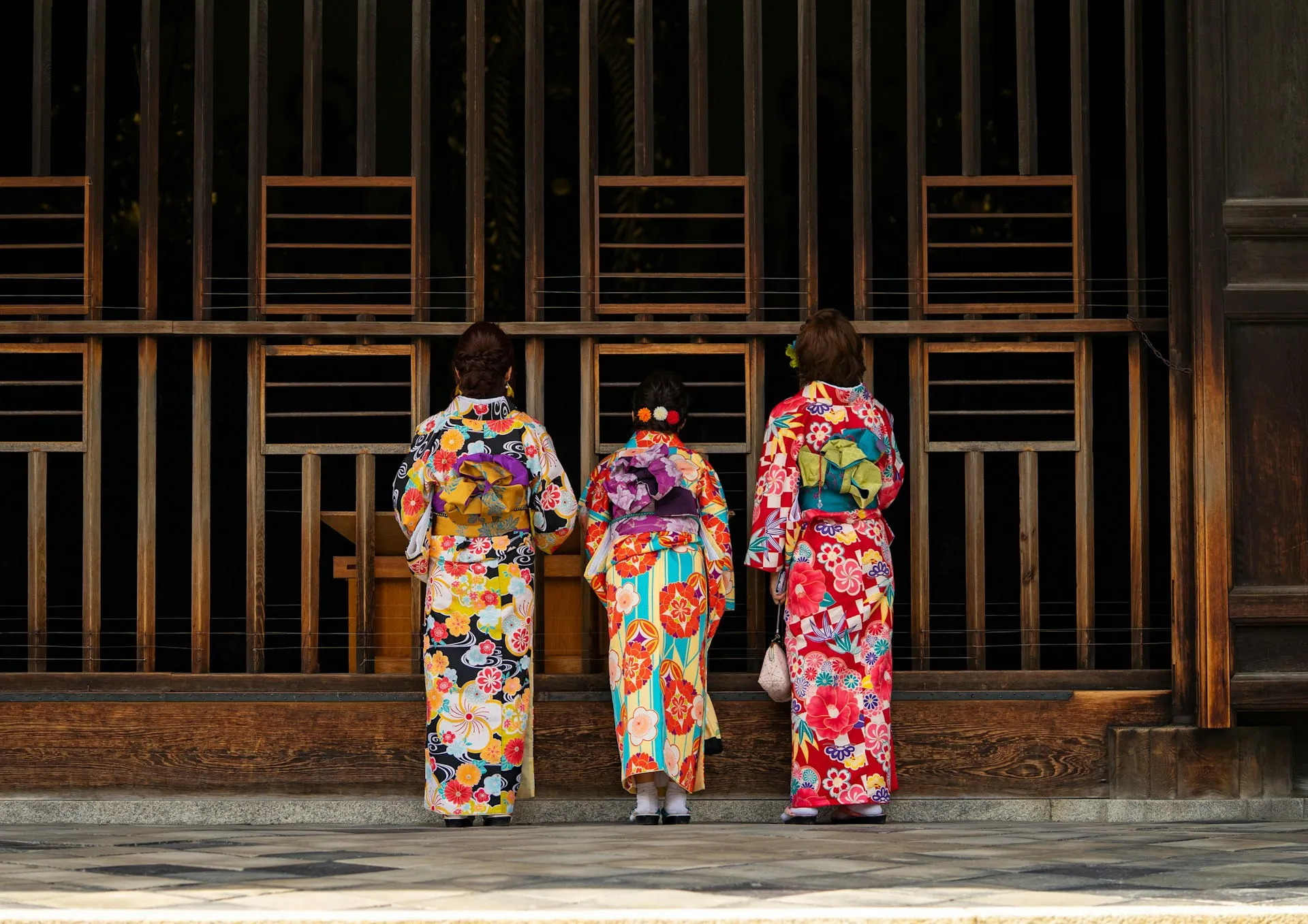
Insider Tips for Immersive Experiences
To truly soak in Japan’s culture and essence, venturing beyond the popular attractions is key. While visiting famous landmarks is a must, some of the most unforgettable memories often come from discovering hidden gems and engaging in authentic local traditions. Here are some Japan travel tips for first-time travelers seeking a more immersive experience.
Hidden gems: Off-the-beaten-path destinations
Japan is full of lesser-known destinations that offer rich cultural experiences without the crowds. One such spot is Kanazawa, often called “Little Kyoto” for its well-preserved Edo-period districts and stunning gardens. Visit the Kenrokuen Garden, one of the Three Great Gardens of Japan, for a peaceful stroll among ponds, bridges, and seasonal flowers that capture Japan’s love for nature. The Nagamachi Samurai District is also worth exploring, offering a unique glimpse into the past with its traditional samurai residences. This experience will surely pique your curiosity.
Another hidden gem is the Iya Valley on Shikoku Island, known for its rugged beauty and hanging bridges that span deep mountain gorges. This remote area is ideal for nature lovers seeking scenic hikes, hot springs, and an escape from the more tourist-heavy areas. You’ll also find traditional thatched-roof farm houses here, some open to visitors.
For a coastal experience, head to Kinosaki Onsen, a charming hot spring town with seven public bathhouses, each offering a unique soak. Kinosaki remains an off-the-radar destination where visitors can experience a slower pace and traditional Japanese hospitality.
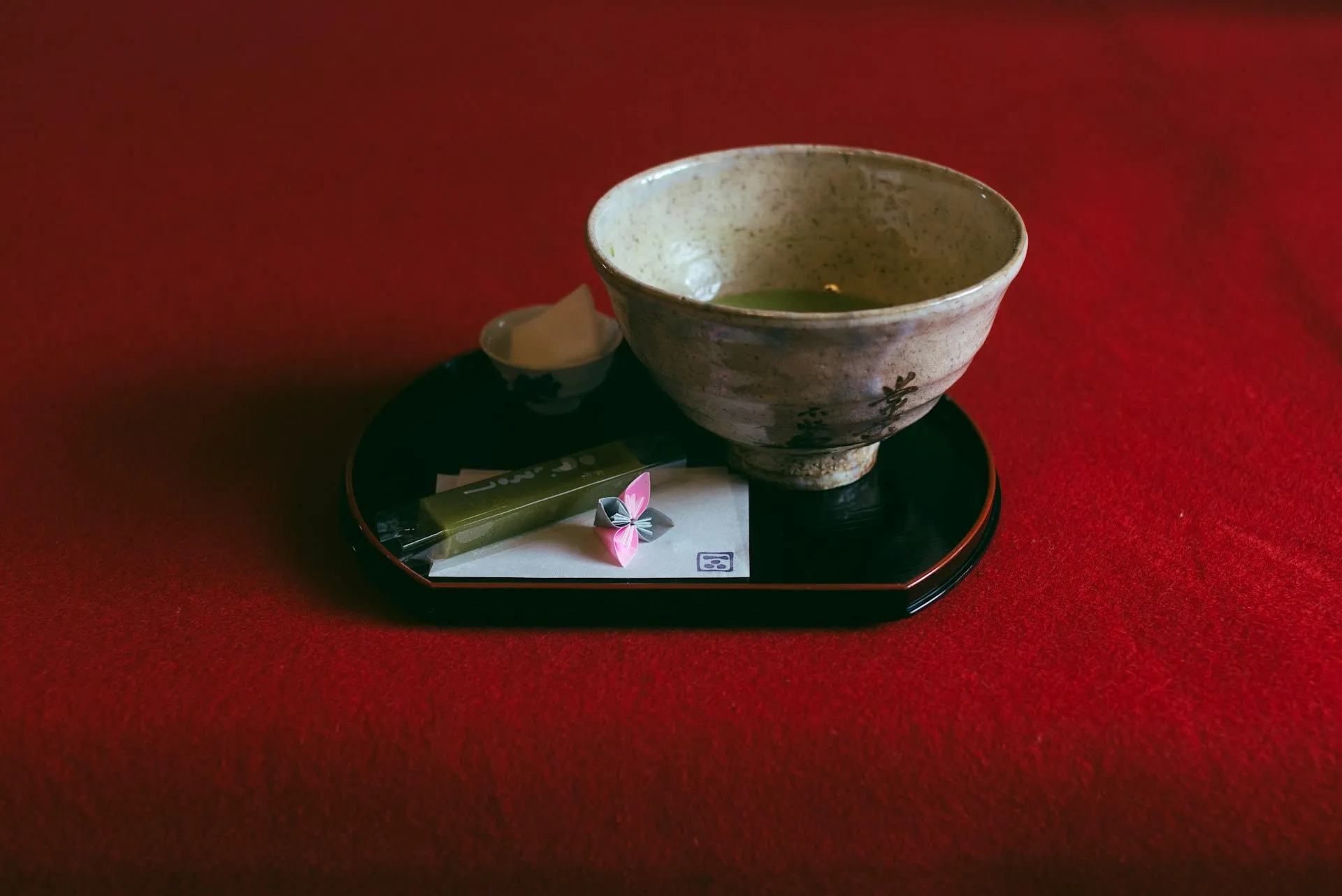
How to experience traditional tea ceremonies and ryokan stays
One of the most immersive ways to engage with Japanese culture is through the practice of a traditional tea ceremony known as chanoyu. These carefully choreographed rituals are about more than just drinking tea; they celebrate mindfulness, tranquility, and grace. Kyoto is home to several teahouses that offer guided ceremonies, but you can also find intimate tea experiences in places like Kanazawa and Nara. Participating in a tea ceremony provides a serene contrast to the hustle of daily travel, offering a deep connection to Japanese aesthetics and philosophy.
To fully immerse yourself in Japanese culture, consider a stay at a ryokan, a traditional Japanese inn. These unique accommodations, with their tatami mat floors, sliding paper doors, and meticulously prepared kaiseki meals, offer an intimate look into Japan’s cultural heritage. For an even more authentic experience, choose a ryokan with an attached onsen (hot spring), like those in Hakone or Yufuin. It’s important to follow proper onsen etiquette, such as rinsing before entering the communal bath, to fully embrace the relaxation and calm of this cherished Japanese custom.
Communication and Language Tips in Japan
Language Basics: Essential Japanese Phrases
Knowing a few key Japanese phrases can make your trip smoother and more enjoyable when visiting Japan for the first time. Although English is spoken in many major tourist areas, learning a few basic expressions is still helpful. The Japanese people greatly appreciate visitors’ efforts, and it can go a long way toward creating meaningful connections.
Must-know words and phrases for tourists
Here are some must-know phrases for navigating your travels:
- Hello/Good day: Konnichiwa (こんにちは)
- Thank you: Arigatou gozaimasu (ありがとうございます)
- Excuse me/I’m sorry: Sumimasen (すみません)
- Yes: Hai (はい)
- No: Iie (いいえ)
- Please: Onegaishimasu (お願いします)
- Goodbye: Sayonara (さようなら)
For travelers, learning how to ask for directions or navigate daily situations is particularly helpful. Memorizing simple requests like “Where is…?” (Doko desu ka? – どこですか?) or “How much is this?” (Ikura desu ka? – いくらですか?) will make you feel more confident as you explore Japan.
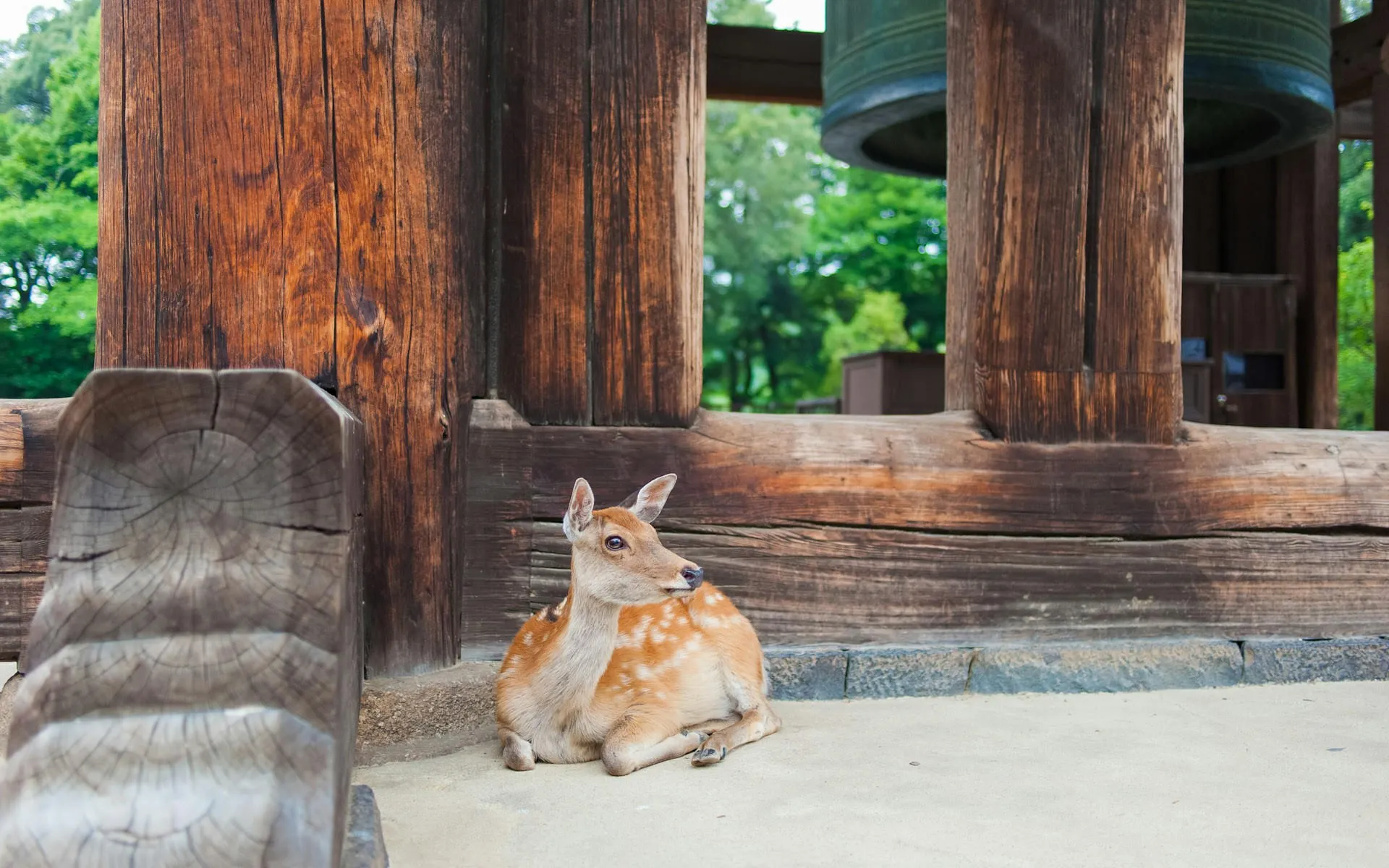
How to communicate when English isn't enough
While many people in Japan’s larger cities, especially in tourism and hospitality industries, can speak basic English, there will still be times when language barriers arise. This is particularly true in rural areas or when interacting with older generations. To make communication easier, here are some useful tips to consider:
- Use translation apps: Download a reliable translation app like Google Translate before your trip. These apps can quickly translate text and speech, which is invaluable when you’re navigating menus, signs, or even conversations.
- Learn how to gesture: The Japanese are polite and often use gestures to express what they’re saying. Similarly, you can use simple gestures to make your point clear. Pointing to objects or miming actions can bridge language gaps when necessary.
- Be patient and polite: Japanese culture places a great emphasis on politeness and patience. Even if the conversation is slow, maintaining a calm and respectful attitude will ensure you receive help. Smiling and using basic phrases like Sumimasen (excuse me) and Arigatou (thank you) can make the interaction more pleasant for both parties.
By combining these essential phrases with tech tools and an open, friendly attitude, you’ll navigate conversations in Japan with ease, even when English isn’t enough. Taking time to learn a bit of the language will not only enhance your experience but also deepen your appreciation for the country’s rich culture and warm hospitality.
Japan Travel Tips: Navigating Language Barriers
Traveling to Japan for the first time can be both exciting and intimidating, especially when language differences come into play. Fortunately, Japan is known for its hospitality, and with the right tools and mindset, you’ll find that overcoming language barriers is more manageable than it seems. Here are some tips to help you smoothly navigate conversations when English isn’t widely spoken.
Using translation apps and helpful tools
In today’s digital age, language barriers are easier to tackle with the help of translation apps. Whether you’re ordering food, asking for directions, or navigating public transport, these tools and features can be lifesavers:
- Google Translate: One of the most popular tools, Google Translate allows you to translate text, speech, and even images. The camera function is particularly useful for reading menus or signs in Japanese.
- iTranslate: Another great option for translating conversations in real-time, especially helpful when you’re trying to ask locals for recommendations.
- Voice-activated tools: Many apps now come with speech translation features, which make it easier to communicate verbally, especially when you’re on the go.
- Offline mode: Japan’s rural areas might not always have strong internet signals, so be sure to download offline language packs to use your apps even when you don’t have data.
These tools offer a fast and easy way to translate on the fly, helping you interact more confidently and enhancing your overall experience.
The importance of body language and politeness
In Japan, communication is not just about words. Body language and politeness play a significant role in interactions. Even if you don’t speak fluent Japanese, maintaining the right attitude can go a long way:
- Body Language: Japanese culture places a high value on non-verbal cues, so bowing slightly when greeting someone, showing gratitude, or saying goodbye can convey respect and appreciation. Gestures like pointing or miming can also help communicate your message when words aren’t enough.
- Politeness: Patience and politeness are key to smooth interactions. Always say “thank you” (arigatou gozaimasu) and “excuse me” (sumimasen) when appropriate. Japanese people are known for their polite demeanor, so mirroring that respect will be appreciated.
By combining these practical tools with a respectful attitude, you’ll find that navigating Japan’s language barriers becomes a much smoother experience. While verbal communication may have its challenges, the universal languages of kindness and respect will take you far on your journey through Japan.

Final Japan Travel Tips: What to Know Before You Go
Preparing for Your Japan Journey
Before embarking on your adventure to Japan, you must ensure you’ve covered all your bases. Preparation can help you avoid common travel hiccups and ensure your trip is smooth from start to finish. Here are some final Japan travel tips to prepare you for your journey.
Final checklist: Travel insurance, currency exchange, and more
- Travel Insurance: Securing travel insurance before you depart is a smart move. Whether it’s medical coverage or protection for trip cancellations, insurance gives you peace of mind, especially when traveling internationally. Review your policy and ensure it covers any activities you plan to enjoy in Japan.
- Currency Exchange: While Japan is becoming more credit-card friendly, cash is still king in many places, especially outside major cities. It’s a good idea to exchange some yen before arriving or use ATMs in convenience stores like 7-Eleven, which often accept foreign cards. Ensure your credit and debit cards are compatible with international transactions, and notify your bank of your travel plans to avoid disruptions. Remember that Japan is a cash-centric society, so having enough local currency on hand will save you from unnecessary stress.
- Must-Have Items: Remember essentials like a universal power adapter, a portable charger, and any medications you need. Japan’s pharmacies are well-stocked, but having your specific prescriptions on hand can save time and trouble.
Safety tips and emergency contacts
Japan is known for being one of the safest countries in the world, but it’s always wise to stay informed.
- Emergency Numbers: In case of emergency, dial 110 for police assistance and 119 for fire or medical emergencies. Japan’s emergency services are reliable and efficient, but if language barriers arise, your hotel staff or local guides can also help facilitate communication. It’s also a good idea to keep the contact information for your country’s embassy or consulate handy.
- Safety Awareness: Japan is a very safe country with low crime rates, but as with any travel destination, stay aware of your surroundings. Keep an eye on your belongings in crowded areas, especially in major cities like Tokyo or Osaka. Also, familiarize yourself with earthquake safety, as Japan is located in a seismically active region. Many public spaces, including hotels and train stations, have earthquake instructions available.
Making the Most of Your Trip to Japan
Your first journey to Japan will be filled with unforgettable sights, flavors, and experiences. As you plan your adventure, here are some final travel tips to help you get the most out of your trip and make your memories even sweeter.
Embrace the unexpected: Staying flexible with your plans
Japan is a country that offers both structure and surprises. While planning an itinerary is a great way to ensure you see the iconic sights, it’s equally important to leave some room for spontaneity. You never know when you’ll stumble upon a charming side street lined with traditional shops or discover a hidden temple tucked away from the main tourist path. Whether it’s an impromptu stop at a local ramen shop or a quiet moment in a serene garden, flexibility allows you to fully embrace the magic of the unexpected.
Transportation, though incredibly efficient, can sometimes experience delays, and some attractions may be more crowded than expected. Stay open-minded and adaptable to changes in your schedule, and you’ll find that the best moments often happen when you least expect them.
The best way to end your trip: Souvenirs and memories
Before you leave Japan, make time to gather souvenirs and memories that will bring you back to this remarkable country long after you’ve returned home. From local delicacies like matcha sweets or artisanal ceramics to beautiful textiles like kimono and yukata, Japan is a paradise for thoughtful and unique keepsakes.
Popular souvenirs like omiyage (regional sweets and gifts) or traditional wooden kokeshi dolls are not just tokens, but gateways to reliving your journey. They are tangible reminders of your experiences, whether a postcard from your Ryokan stay or a small trinket from a temple visit. Each item is a snapshot of your trip’s highlights and the personal moments that made it so meaningful. As you wrap up your adventure, these souvenirs will help you savor the memories you’ve made and take home not just items but the essence of Japan’s rich culture and warm hospitality.
Japan seamlessly blends ancient traditions with cutting-edge modernity, making it a top destination for travelers from all over the world. Preparing for the journey can feel overwhelming for first-time visitors, but these travel tips will help you navigate the country like a seasoned traveler. From choosing the best time to visit and packing essentials to understanding Japan’s efficient public transportation systems and cultural etiquette, we’ve covered all the key areas to ensure your trip goes smoothly.
You’ve discovered how to make the most of your time in iconic cities like Tokyo and Kyoto, where to find off-the-beaten-path destinations, and the crucial role of embracing Japan’s customs and traditions during your stay. We’ve also shared vital tips on communicating across language barriers, using essential travel tools like IC cards, and navigating the local culture with respect.
By following these tips, you’ll be ready to explore Japan with confidence and make memories that will last a lifetime. Now that you have all this information, why not take your experience one step further?
Join Delectable Destinations on our Timeless Japan trip in May 2026, and discover the magic of this beautiful country firsthand. Although our October 2025 trip is sold out, there are still spaces available for May 2026. Don’t miss this opportunity to experience Japan in all its glory. If you have questions or need more details about our upcoming Japan trip, please feel free to contact us.
For more travel inspiration and expert tips, be sure to explore the Delectable Destinations blog, where we share insights for travelers from our curated journeys around the world.
